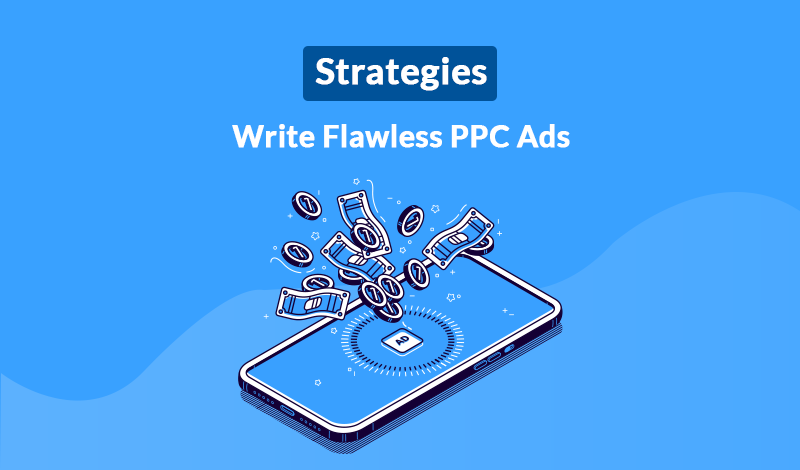Is there any such thing as “flawless” in the world of digital marketing? Probably not. What we do know is that there an ocean of content and advertising on the Internet all with a single goal – getting potential customers to make purchases of the products and services they are selling. Some of it truly resonates with the brand’s audience – education, entertainment, inspiration, and even relationship-building through storytelling.
Then there is direct advertising. It is often not as popular as other types of marketing content, because it can be seen as an intrusion and simply a “hard sell” technique. And it can be especially annoying when, after a consumer conducts a generic search for a product or service, all of a sudden, ads for these things show up everywhere that searcher goes – on the rails of his Internet access and email accounts, on the customer’s social media feeds, and even on other searches they conduct. Any brand that engages in this type of advertising is always taking a bit of a chance, and the challenge is to intrigue and engage rather than annoy.
The Specific Challenges of PPC Advertising
Any marketer who is involved in PPC advertising understands the challenges he faces. No matter what or how many platforms he may use for this type of marketing, he has very few words that can capture his targets and entice them to click through to an enthralling landing page filled with unique content that will provide the benefits, value, and solutions you provide.
And the competition is rough. Somehow, your ads must stand out among all of the others.
Exactly how do you get this done?
Here are five strategies to create PPC advertising that viewers cannot resist.
1. Appeal to Your Target Audience
How well do you really know your target customers? As a marketer, you have certainly developed a customer profile – a picture of his/her typical characteristics that include age range, gender (if appropriate), socioeconomic status, educational level, lifestyle choices, common geographic locations (urban, suburban, rural), common behaviors, values, pain points and solutions they seek, purchasing history, etc. The more information you have, the better understanding you have of how you may appeal through your ads – both verbally and with any image you might include.
For example, if you have a company that has a BOGO (Buy One; Give One) and an audience that has an emotional need to feel that they are doing good, then PPC advertising from companies like Bombas Socks, Toms Shoes, Headbands of Hope will resonate. Each of these companies donate one item for every item sold.
Imagine this image of a child with cancer along with a call-to-action and a link to a landing page that will allow a consumer to do just that by purchasing a headband.
2. Do the Research
Before a business launches, it conducts a large amount of market research, answering such questions as:
● Is there a need for the product or service I plan to offer?
● Who is my target audience and how large is it?
● How much competition is out there?
● What value and benefits do I offer that are unique?
Before a business makes a decision to engage in PPC campaigns, there is additional research involved:
● Where does the target audience hangout online? PPC ads have traditionally been used through major search engines, as consumers search for products. But they are now used as consumers search on many other platforms, including Facebook, LinkedIn, Instagram, Twitter, and more. All of these platforms offer PPC advertising, so it will be important to choose those that will reach your target audience.
● Check out the PPC advertising of your competitors or even related niches. They have the same audiences as you do. What style and tone do they use? What types of humor might they use that appeals to your audience? What types of calls to action are they using? Are their designs colorful? What fonts are they using that look appealing? Your PPC advertising need to offer something more unique than those of your competitors, perhaps be more appealing in color, font and design, and creativity.
3. Those All-Important Keywords
This is perhaps the most important part of creating a “flawless” PPC ad. If you use PPC marketing campaigns, you are all too familiar with the “auction” that occurs for the most popular keywords.
You also know that keyword searches are now conducted very differently – phrases, not just single words and voice searches just to name two of these.
Your keywords must match those of a searcher. Most platforms do have keyword quality “scores,” based upon their relevance to what searchers look for. The more specific you can be, the better. Here is how you go about selecting your keywords:
● Use a good PPC keyword research tool to find those that are most relevant to your product or service.
● You may then want to group your keywords that fit together well and that can form longer-tailed terms that consumers would use.
● Use different combinations so that you can “test” their effectiveness later.
Continue to research keywords and keyword combinations, because their popularity continually evolves.
4. The Aspect of Creativity
This is a tough challenge. You want to find a way to attract your audience with your very first words and then provide a product description that shows value, benefit, or uniqueness in just a few more words. It’s a tall order. Take a look at this example from Castor and Pollux organic pet foods.
The very first line is intriguing. And people associate food with humans. Add to this the emotional appeal that we want to treat our pets as members of our family, and you have a pretty perfect ad. People searching for organic pet food on a platform where this ad is contained will likely get this as a response.
While PPC ads contain very few words, the need for creative writing is significant and not a talent that all marketing or marketing staffs have. Many of them have educational backgrounds that include lots of academic paper writing and editing, during their college years, and some have certainly had a bit of coursework in marketing copy writing, but creativity goes beyond that. If a marketer is feeling challenged by PPC ad creativity, it may be better to outsource this writing to someone who has that talent.
5. The Analytics
There is no point in proceeding with a PPC campaign if you do not intend to analyze its effectiveness. The good news is that every platform that offers PPC campaigns also provides full analysis reports. Here are the things you want to look for as you review these reports:
● How many clicks are you getting from each ad on each platform?
● If you are running the same ad(s) on several platforms, are you getting similar click-through? If not, you may want to remove an under-performing ad from a specific platform?
● Which platforms are resulting in the most clicks overall? Which are getting the least?
● Which platforms and clicks re giving you the conversions you want?
● Are you getting lots of clicks but not enough conversions? The problem, then, is probably your landing page.
All of this detailed information will let you make wise decisions going forward, related to the ads themselves, the keywords, the platforms, the wording, design, image, etc. But as you consider the changes, don’t be too hasty. When you begin a campaign, give it some time.
Concluding Remark – The Additional Key Factor of That Landing Page
While this piece is focused on the writing of PPC ads, it is impossible not to address that landing page to which consumers are being directed. First, that page must provide exactly what is promised in the PPC ad. And this is where some amazing stuff can happen.
Technology now allows all types of visual and other media content that consumers now almost demand. It’s important to look at all of these new technology trends and see how a landing page can be continually improved to make a potential customer’s experience well worth it.
Dorian Martin is a writer, editor, copywriter, and an experienced proofreader for the best academic writing service, Get Good Grade. He is also passionate about all things digital and entrepreneurial and is a frequent blogger on such topics.





Leave a Reply